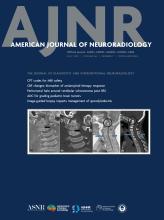Case of the Month
Section Editor: Nicholas Stence, MD
Children's Hospital Colorado, Aurora, CO
February 2023
Next Case of the Month Coming March 14...
Sphenoid Sinusitis with Intracranial Extension Causing Cavernous Sinus Thrombosis with Pituitary Involvement
- Background:
- Though it is typical for cavernous sinus thrombosis (CST) to originate from infections within the paranasal sinuses, we could find only 1 report of subsequent pituitary involvement in this setting in the English-language literature.
- Approximately 80% of people with pituitary apoplexy have panhypopituitarism and can be evaluated via a pituitary panel. In this case, the patient had low TSH with borderline-low FSH and LH.
- Clinical Presentation:
- The patient was ultimately taken to the OR for functional endoscopic sinus surgery with bilateral sphenoidotomies, bilateral partial anterior and posterior ethmoidectomies, and right concha bullosa resection. Ten days later, while still in the ICU, the patient was noted to have a change in neurologic status, with 6-mm dilated pupils and not following commands. A head CT showed hemorrhagic transformation of a right MCA territory infarct (not shown). Neurologic status rapidly deteriorated, the family opted for comfort care measures, and the patient subsequently died.
- Key Diagnostic Features:
- CST, cerebral sinovenous thrombosis (CSVT), multiple hemorrhagic and nonhemorrhagic venous infarcts in multiple noncontiguous territories, extensive dural and leptomeningeal enhancement, extensive central skull base infection likely arising from the sphenoid sinuses including central skull base osteomyelitis with accompanying inflammatory changes within the infratemporal fossae and multiple suprahyoid spaces of the neck, and finally pituitary adenohypophyseal hypoenhancement
- Differential Diagnoses:
- General differential considerations for a hypoenhancing pituitary include hemorrhagic macroadenoma, Rathke cleft cyst, and abscess.
- Hemorrhagic macroadenoma: Subacute-to-chronic course with nonenhancement of pituitary mass and blooming artifact on MRI, which was not present
- Rathke cleft cyst: Remnant of the fetal Rathke pouch that can form a cyst at any age but mean age of presentation is 45 years; can have a "claw" sign of an enhancing rim indicative of a compressed pituitary surrounding a nonenhancing cyst, but not present here
- Abscess: Will often show peripheral rim of enhancement
- General differential considerations for a hypoenhancing pituitary include hemorrhagic macroadenoma, Rathke cleft cyst, and abscess.











